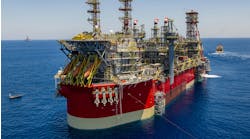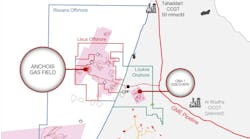Kevin McMillin
Houston
Completion/Production Operations Driving Coiled Tubing Market
The utilization of coiled tubing in offshore oilfield operations has experienced very robust growth since its inception in the late 1980s. As operators began to recognize the economic benefits of a smaller well environment, the service industry focused a lot of time and resources on addressing this challenge. This extra attention and huge advances in electrical and mechanical component technology have resulted in some very exciting products and solutions for the industry to utilize. All aspects of well construction, and development have been affected.To the present, most of the development in the slimhole market has been more along the lines of application. The fundamental application of utilizing a continuous tube, versus the conventional tubular joint method, to convey existing tools and equipment was the first obvious advantage. The high tensile strength of coiled tubing allows for higher pulling limits on downhole equipment, thus making it a cheap and effective alternative for production workover and fishing applications.
This fundamental mech anical application quickly evolved into applications such as existing tubing remedial work and maintenance, well fracturing and stimulation, sand control remediation, multilateral wellbore utilization, and all of the operations associated with coiled tubing drilling. Refer to the coiled tubing article later in this issue for more detailed information.
ERD "high mark" raised again
British Petroleum's Wytch Farm project has achieved another industry milestone, raising the bar again for technological achievement in extended reach drilling (ERD). The drilling and completion of the M-14 well was achieved in a record time of 81.7 days. Total depth of the well was 31,355 ft with a lateral displacement of 29,324 ft.Optimized performance from all companies involved, and a consorted team approach resulted in a 40% reduction in time to completion of the well. The M-14 well was the latest drilling project in the Stage III development of the Sherwood reservoir. The closest well record prior to this was Wytch Farm's M-11 well, drilled to a total depth of 34,967 ft in 185 days.
Expect more achievements such as this in the near future. New rotary steerable drilling system technology is advancing very rapidly.
- Baker Hughes seems to be leading the current charge on the industry with a new, proven, reliable system.
- Schlumberger has developed a system, and with the older Camco tool in it's stable of products, is providing viable alternatives for the industry.
- Sperry Sun is coming out of field test with their contribution to this particular market.
The general idea for these systems has been around for quite some time, but didn't really catch on until the past couple of years. Operators' desire to increase productivity of existing platforms is driving the push for more ERD projects. More effective drainage of existing reservoirs will help in lowering costs and improve efficiency of facilities already in place. More effective ERD projects will no doubt require a rotary steerable drilling approach to achieve these drilling objectives.
TAML classification shortens multilateral learning curve
The classification system resulting from the December, 1997 TAML consortium has effectively shortened the industry learning curve for this rapidly growing technology. So many times in the past, a new technological problem in our industry has resulted in several companies furiously reacting to provide possible solutions.This often resulted in diverse solutions which may not have efficiently addressed the problem, forcing companies back to the drawing board for re-design work. This greatly increases the delay time for operators to have access to a viable technological solution. Also, service companies incur more R&D costs for the re-design work and lost revenue because of no solution to the operators' need.
If you look at multi-lateral technology and start talking to industry service and operator professionals, all of them know the terminology and the latest achievements within the classification scheme set forth by the consortium. This broad knowledge base helped facilitate an orderly and logical evolution of a new and rapidly growing technology. Minimal delay time for development of tools and services and reduced costs for service providers was the result.
The most important point to be made is that a certain degree of shared knowledge and expertise in the infancy of new technology has proven to help operating companies and service providers alike address the industry's technological problems in a more timely and cost-effective manner.
Trend to Portable Systems Continues
Transocean Petroleum Technology, a division of Transocean Offshore, Inc., announced this month the commissioning of a second coiled tubing drilling and well intervention system. This system contains an ergonomically designed control cabin, free standing mast, and modular circulating system. The small footprint, modular design, flexibility, and the fact that one operator can control all aspects of the ongoing operation are it's strong selling points.This is further evidence of the trend of operators wanting smaller and more flexible service equipment. The popular practice of utilizing minimal use platforms is another driving force for the use of these systems. Several companies have marketed rigless pulling units for offshore workover applications. Multi-service vessels are becoming more popular, adding more intervention service capability than existing lift boat technology can provide.
Copyright 1999 Oil & Gas Journal. All Rights Reserved.


